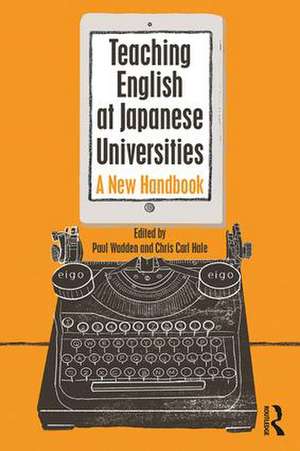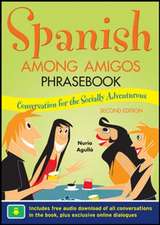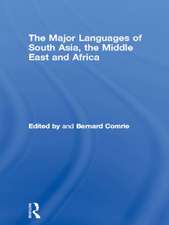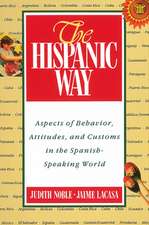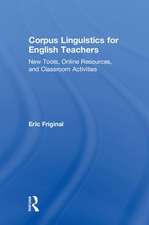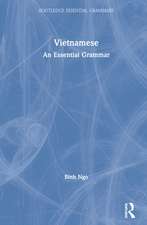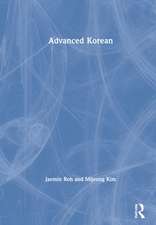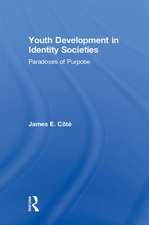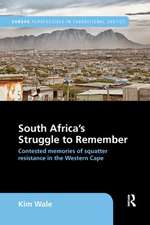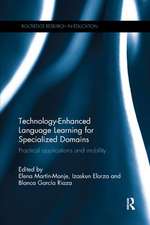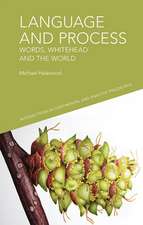Teaching English at Japanese Universities: A New Handbook
Editat de Paul Wadden, Chris Carl Haleen Limba Engleză Paperback – 31 oct 2018
| Toate formatele și edițiile | Preț | Express |
|---|---|---|
| Paperback (1) | 353.27 lei 43-57 zile | |
| Taylor & Francis – 31 oct 2018 | 353.27 lei 43-57 zile | |
| Hardback (1) | 1001.07 lei 43-57 zile | |
| Taylor & Francis – noi 2018 | 1001.07 lei 43-57 zile |
Preț: 353.27 lei
Nou
Puncte Express: 530
Preț estimativ în valută:
67.62€ • 73.47$ • 56.84£
67.62€ • 73.47$ • 56.84£
Carte tipărită la comandă
Livrare economică 21 aprilie-05 mai
Preluare comenzi: 021 569.72.76
Specificații
ISBN-13: 9781138550391
ISBN-10: 1138550396
Pagini: 250
Ilustrații: 19 Line drawings, black and white; 6 Halftones, black and white; 25 Illustrations, black and white
Dimensiuni: 156 x 234 x 13 mm
Greutate: 0.38 kg
Ediția:1
Editura: Taylor & Francis
Colecția Routledge
Locul publicării:Oxford, United Kingdom
ISBN-10: 1138550396
Pagini: 250
Ilustrații: 19 Line drawings, black and white; 6 Halftones, black and white; 25 Illustrations, black and white
Dimensiuni: 156 x 234 x 13 mm
Greutate: 0.38 kg
Ediția:1
Editura: Taylor & Francis
Colecția Routledge
Locul publicării:Oxford, United Kingdom
Public țintă
Postgraduate, Professional, and Professional Practice & DevelopmentCuprins
Part I: The Setting 1. The Landscape of Japanese Higher Education: An Introduction (Chris Carl Hale and Paul Wadden) 2. Making a Career of University Teaching in Japan: Getting (and Keeping) a Full-Time Job (Jenifer Larson-Hall and Jeffrey Stewart) 3. The Ronin Teacher: Making a Living as a Full-Time Part-Timer at Japanese Universities (Chrystabel Butler) 4. The Chrysanthemum Maze: Understanding Your Colleagues in the Japanese University (Curtis Kelly and Nobuhiro Adachi) Part II: The Courses 5. Tearing Down the Wall of Silence: Constructing the English Conversation Class at a Japanese University (John Wiltshier and Marc Helgesen) 6. The Blind Spots of Reading: Switching on Lights in the Japanese University Classroom (Gordon Myskow, Paul R. Underwood, and Rob Waring) 7. Mandatory ‘Sentencing’: Breaking Loose in the Japanese University Writing Classroom (Gordon Myskow) 8. Real World Listening in the Japanese University Classroom (Chris Carl Hale) 9. Teaching and Learning Vocabulary in the Japanese University (Paul Wadden, Charles Browne, and Paul Nation) 10. Teaching Presentation in the Japanese University (Curtis Kelly) 11. Teaching Subject-Content through English: CLIL and EMI Courses in the Japanese University (Howard Brown and Annette Bradford) 12. Using Technology in the Japanese University Classroom (and Beyond) (Dan Ferreira and Joachim Castellano) 13. Homework in the Japanese University Classroom: Getting Students to Do It (and then Evaluating their Performance) (Thomas N. Robb) Part III: The Classroom 14. Nails that (Still) Don't Stick Up: Revisiting the Enigma of the Japanese College Classroom (Fred E. Anderson) 15. Creating Engagement and Motivation in the Japanese University Language Classroom (Bill Snyder) 16. The Japanese Student and the University English Teacher (Donna T. Fujimoto) 17. English Language Policy in Japan and the Ministry of Education: Emphasis, Trends, and Changes that Affect Higher Education (Paul R. Underwood and Gregory Paul Glasgow) Part IV: The Workplace 18. "He said, She said": Female and Male Dynamics in Japanese Universities (Diane Hawley Nagatomo and Melodie Cook) 19. The Japanese University Teacher of English (Asako Takaesu and Mikiko Sudo) 20. Beyond the Native Speaker Fallacy: Internationalizing English Language Teaching at Japanese Universities (Tiina Matikainen) 21. Walk a Mile in The Shoes of the Non-Japanese Administrator (Stephen M. Ryan and Peter McCagg) 22. Conflicts, Contracts, Rights, and Solidarity: The Japanese University Workplace from a Labor Perspective (Gerome Rothman) 23. Navigating the Chrysanthemum Maze: Off-hand Advice on How to Tiptoe through the Minefield of the Japanese University (Curtis Kelly and Charles Browne)
Notă biografică
Paul Wadden, PhD, is Senior Lecturer in the English for Liberal Arts Program of International Christian University, Tokyo. The editor of the original A Handbook for Teaching English at Japanese Colleges and Universities (Oxford University Press, 1993), he is the author of articles on language teaching and academic writing appearing in TESOL Quarterly, ELT Journal, RELC Journal, College Literature, Composition Studies and many other journals; articles on culture, politics, and education in The Washington Post, The Wall Street Journal, The New York Times, and The Japan Times; and more than 50 textbooks. He has taught in Japanese universities for the past 30 years.
Chris Carl Hale, EdD, is Associate Professor in the Graduate School of Global Communication and Language at Akita International University, Japan and formerly the Academic Director of the Tokyo Center of the New York University (NYU) School of Professional Studies (SPS). He has taught undergraduate and graduate courses related to language acquisition and teacher training in the United States and in Japan for over 20 years at universities such as City University of New York (CUNY), Queens College, Teachers College Columbia University, and International Christian University, Tokyo. His articles have appeared in Language Testing in Asia, TESOL International, and Teachers College Columbia University Journal of TESOL and Applied Linguistics. He is also an avid DJ and techno music producer.
Chris Carl Hale, EdD, is Associate Professor in the Graduate School of Global Communication and Language at Akita International University, Japan and formerly the Academic Director of the Tokyo Center of the New York University (NYU) School of Professional Studies (SPS). He has taught undergraduate and graduate courses related to language acquisition and teacher training in the United States and in Japan for over 20 years at universities such as City University of New York (CUNY), Queens College, Teachers College Columbia University, and International Christian University, Tokyo. His articles have appeared in Language Testing in Asia, TESOL International, and Teachers College Columbia University Journal of TESOL and Applied Linguistics. He is also an avid DJ and techno music producer.
Recenzii
'For those new to Japan, the first experiences of teaching English in Japanese higher education are often fraught with cultural pitfalls and moments of consternation. Wadden and Hale have edited an indispensable guide for both surviving and thriving as an English teacher in Japanese colleges and universities. The chapters of this book have been written by seasoned veterans who on average have taught in Japan for more than twenty years, and cover topics ranging from how to get a job in a Japanese university, to how to better appreciate the dynamics of the classroom and workplace. Readers will gain a deeper understanding of how to approach their classes, their students, as well as how to get along with their Japanese colleagues and administrative staff. This book should be required reading for anyone wanting to teach English in Japanese higher education.' — Gregory Hadley, Professor of Cultural Studies and Applied Linguistics, Niigata University, Japan and Visiting Fellow, University of Oxford, UK'If the first edition of this book has been the Bible for those teaching in Japanese universities over the past 25 years, then this new edition will quickly come to be seen as the New Testament. Full of academically informed insights gleaned from personal (and sometimes painful) experience, it also provides a fascinating record of what has and has not changed in Japanese higher education since the early 1990s.' — Roger Goodman, Nissan Professor of Japanese Studies, University of Oxford, UK
'As a caucasian native-speaker of English and trainer/supervisor of English instructors, of all the interesting and cogent chapters presented in this Handbook I was most struck by Tiina Matikainen’s supportive article for non-native speakers (NNS). What I was struck by was the awareness that my younger self was also affected by her "Native Speaker myth" and the "Caucasian halo effect". I have since learned to appreciate the value of NNS, some of whom are among the best instructors I have ever encountered. She makes her case well, and her survey of the "most important characteristics for a good language teacher" is compelling.' — Thomas Pendergast, Professor Emeritus, International Buddhist University (Osaka), Japan
'As a caucasian native-speaker of English and trainer/supervisor of English instructors, of all the interesting and cogent chapters presented in this Handbook I was most struck by Tiina Matikainen’s supportive article for non-native speakers (NNS). What I was struck by was the awareness that my younger self was also affected by her "Native Speaker myth" and the "Caucasian halo effect". I have since learned to appreciate the value of NNS, some of whom are among the best instructors I have ever encountered. She makes her case well, and her survey of the "most important characteristics for a good language teacher" is compelling.' — Thomas Pendergast, Professor Emeritus, International Buddhist University (Osaka), Japan
Descriere
This Handbook providers a refreshed and updated reference work for the next generation of teachers of English at Japanese universities. This guide expands the readership beyond the English language teachers to encompass the growing number of content-specific educators coming to, and already in, Japan who teach the EMI and CLIL courses.
